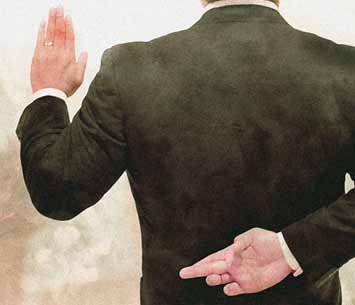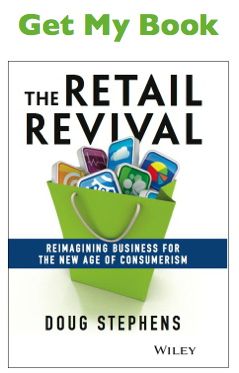By Doug Stephens

Loyalty is an increasingly fleeting thing. In fact, the average Gen Y mother now defines “brand loyalty” as a window of allegiance lasting 6-12 months before she moves on to explore alternatives. And suffice to say, there are plenty of alternatives out there for her to explore, regardless of category. So, given the increasingly elusive nature of loyalty and the abundance of brand and product choices available, one might be inclined to argue that there’s never been a more important time for you to implement a loyalty program. But it’s simply not true and here’s why…
Any loyalty program you create probably won’t work.
But don’t feel too badly because as it turns out, most loyalty programs don’t work – at least not the way the companies who own them would like to believe. In fact, a recent study from Edgell Knowledge Network found that the level of actual brand loyalty among consumers who are part of a loyalty program versus those who are not, is not materially different. Loyalty program members are not, in effect, any more or less loyal. What’s worse, according to the same study, is that 81% of loyalty program members don’t even understand what their rewards entitlements consist of or how they’re paid out, which shouldn’t be surprising, given that the survey also found the average consumer belongs to as many as 18 different loyalty programs!
So, why don’t most loyalty schemes work? Research points to several reasons.
Loyalty programs are transactional. Loyalty isn’t.
The you do this and we’ll give you that, transactional nature of most loyalty programs is a shaky foundation for any consumer/brand relationship, resulting in what some researchers have dubbed mere “deal loyalty” as opposed to true brand loyalty. The program trains customers to respond to points, rewards or incentives but does nothing to foster true allegiance to the brand. Let’s face it – if marriages were built like most loyalty programs, they wouldn’t be very gratifying. Consequently, relationships based on this sort of tit-for-tat dynamic tend not to be very sustainable.
The best brand/consumer relationships are those that become transformative in the sense that the customer feels somehow better for having done business with the brand. The brand and shopping experience are the loyalty program. And customers love them, not because they earned a few points or rewards, but because the experience was unique and remarkable.
Trader Joe’s, Apple and Cirque du Soleil are good examples of brands that command a kind of fandamonium and brand love without the need for any transactional loyalty schemes at all.
Loyalty programs generalize behaviors.
Most loyalty structures are based on arbitrary and generalized levels of purchase volume or frequency – bronze, silver or gold – so to speak. It’s all largely measured using structured sales data grouping customers loosely into tiers or categories of loyalty. As such, they treat consumers largely the same, instead of recognizing them as the unique individuals they actually are in terms of what they buy, as well as how, when and where they buy. Highly progressive brands, on the other hand, are doing just the opposite. They’re using customer data to build intense personalization directly into their product, so as to build loyalty intrinsically, and without the need for any sort of generalized and superficial reward system. Netflix, Facebook and Amazon all use individual data to build personalization and thus loyalty while customers are using their sites in real time. In other words, the product itself is the loyalty program.
Loyalty programs breed commoditization.
Show me the companies in a given category that most aggressively push their loyalty programs and I’ll show you those that are the least differentiated from their competitors. I’d go so far as to argue that for these brands, loyalty programs become a potentially deadly distraction from the deeper issue of competitive parity they face. Gas stations, credit cards, and airlines very often fall into this category. Rather than spend meaningful effort to make their product or service unique, they simply play with the size of the carrot they dangle in front of customers, which makes for a fleeting degree of loyalty at best. The risk of course, is that if and when a new entrant comes to market with a differentiated brand offering, incumbents who have been leaning on incremental loyalty games get annihilated.
Experience first, loyalty last (and maybe not at all).
So, broadly speaking, I see loyalty programs as being a lot like vacation  properties. Unless your investment portfolio is maxed out in all other aspects, vacation properties tend to be poor investments. Similarly, unless your brand is delivering a remarkable, transformational and personalized level of experience to every customer, loyalty programs will serve as nothing but a drain on your potential to make headway on these other, far more important fronts. By the same token, if you really are creating a remarkable product and brand experience, you probably won’t need a loyalty program at all!
properties. Unless your investment portfolio is maxed out in all other aspects, vacation properties tend to be poor investments. Similarly, unless your brand is delivering a remarkable, transformational and personalized level of experience to every customer, loyalty programs will serve as nothing but a drain on your potential to make headway on these other, far more important fronts. By the same token, if you really are creating a remarkable product and brand experience, you probably won’t need a loyalty program at all!
Put another way; if your loyalty program doesn’t work, it most likely wouldn’t have helped you much anyway. And If it does work, it probably means you didn’t need it in the first place.
______________________________________________________________________________
Doug Stephens is one of the world’s foremost retail industry futurists, advisors and speakers and the author of the groundbreaking book The Retail Revival: Reimagining Business For The New Age of Consumerism.

